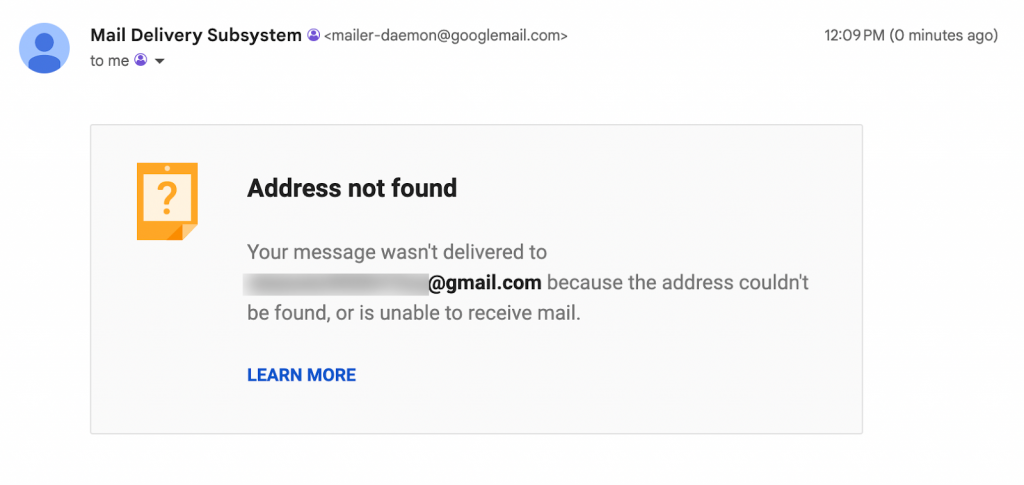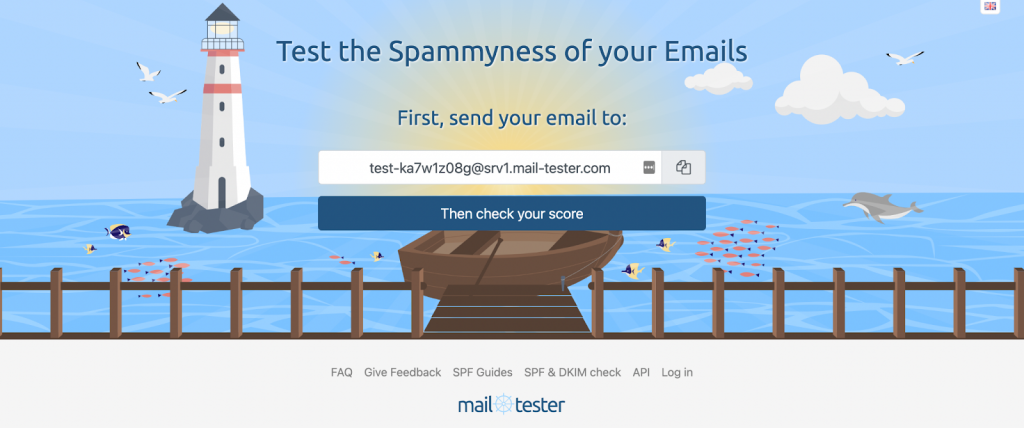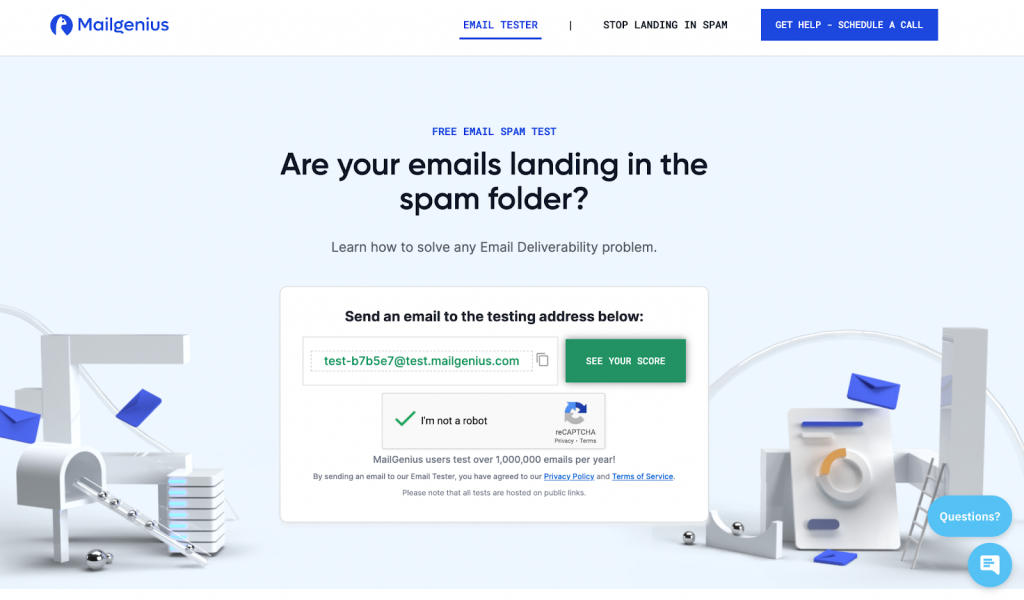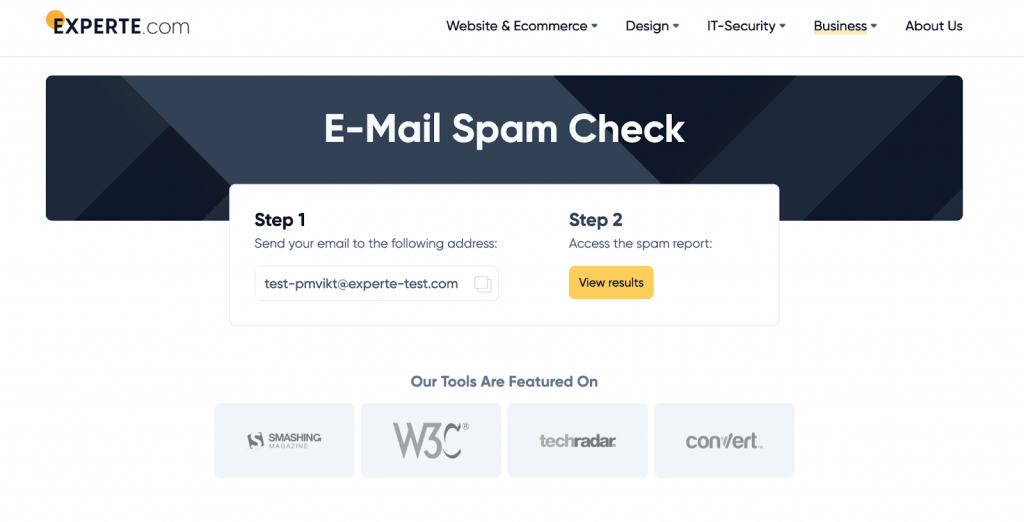Email Deliverability: What It Is & How to Improve It (2023)
Do you remember the first time you realized that some of the emails you are sending out to your audience have landed in their spam folders? I can surely recollect how helpless I felt the first time I experienced it.
Luckily, this proved to be something that is quite easy to fix, and I am here to help your emails avoid the spam folder.
What Is Email Deliverability?
Email deliverability is a metric representing the percentage of emails that have successfully made it to the recipient’s inbox.
Email deliverability looks quite similar to another metric – email delivery. Since digital marketers often mix them up, let’s define the latter and understand the difference between them.
Email delivery is a technical term and represents the state when the recipient’s email server has accepted your message and handed it over to them. It does not matter if your email lands in their main inbox, the Promotions, or even the Spam folder. As long as they have arrived at the destination email account, you can consider them delivered.
You don’t get email delivery if your messages have bounced. Here’s what a bounce looks like.

We’ll talk about email bounce in more detail later on, but to give you a quick intro, bouncing means that the mail server of the person you are reaching out to has refused to accept your message.
Email deliverability, on the other hand, is a marketing term telling you that the email is not in the Spam folder. Instead, it is either in the main inbox or the Updates/Promotions folder, and the user can easily see and open it.
In other words, email deliverability shows the percentage of people your message has successfully reached.
Now, let’s understand why you, the business owner or the digital marketers, should care about the delivery rate of your email campaigns.
Why Is Email Deliverability Important?
We now know that email deliverability tells you how effective you are at reaching your target audience over email.
With a low deliverability rate, only a fraction of your email list sees your message and has a chance to read it. Therefore, bad deliverability will cause your key email marketing KPIs (such as the number of opens and conversions) to drop.
With proper deliverability (more on that later), you can reach a greater number of people in your target audience and improve your ROI thanks to more people seeing your messages, clicking on them, and converting.
Now that we understand the importance and the impact of deliverability on your email marketing efforts, let’s have a look at the industry-standard rates for email deliverability.
What Is a Good Email Deliverability Rate?
What’s the percentage of emails not making it to the inbox?
If we simplify and tell you a general average rate for marketing emails, it would be around 84.2% as of January 2023, according to comprehensive research posted on Emailtooltester.
However, I would not recommend considering the number above a benchmark to evaluate the deliverability rate of your email marketing campaigns, as it includes data from lots of low-quality spammy campaigns that bring the average down.
According to the same research, for an email that follows the deliverability best practices, the benchmark rate should be somewhere in the vicinity of 95%.
Now, let’s look at the factors that affect your email deliverability rate and understand what they are about.
What Factors Affect Email Deliverability?
Although the algorithms for filtering spam for email clients like Gmail, Outlook, Yahoo, and others are kept secret, digital marketers have still managed to identify the primary reasons for low email deliverability based on their experience sending marketing emails.
Here are six of the most important ones that you should know about.
Factor #1: Subject lines
The part of email copy that can significantly improve or hurt your email deliverability is your subject line.
The logic behind it is simple: if your recipients do not like your subject line and consider your message spammy, there is a chance that they will tag it as spam and report it to their email service provider.
Nobody really knows how the algorithm for classifying an email as spam works in Gmail and other providers. However, it is clear that reporting a message as spam significantly increases the chances that the email service will send future messages from that sender to the spam folder too.
To make sure that you are creating a sense of trust among your readers with your subject line, you can follow these general best practices:
- Avoid any typos and grammatical errors.
- Don’t capitalize all of the letters of your subject line.
- Avoid using too many special characters, such as consecutive question marks and exclamation marks.
The same best practices apply to auto-confirmation emails, which are transactional messages triggered by your actions. Such emails often get into a spam folder because subject lines are constructed incorrectly and oftentimes include trigger words and phrases, which we’ll talk about next.
Factor #2: Spam trigger words
Your selection of words in both the subject line and the body of your email can affect your deliverability too.
In particular, email service providers pay close attention to words and phrases that people generally associate with spam traps. If they find these phrases in your message, you might trigger their malicious message detector algorithms and end up in the spam folder.
Moreover, there is also a chance that your readers will see these trigger words, find your content suspicious, and manually mark your email as spam.
Here are some of these words and phrases that you should avoid using in your emails:
Terms that create a false sense of urgency: urgent, right now, once in a lifetime, only today
Misleading phrases: this is not a scam, you won the lottery, free money, get out of debt, become a millionaire
Factor #3: IP reputation
Whenever you send a message, your email server communicates with your recipient’s email server. Each server has its unique address on the internet, called an IP.
To make it easy to determine spammers, email service providers (ESPs) have implemented an IP reputation system that gives a score to your IP address based on the spamminess of the content you send.
If the email provider’s spam algorithms constantly find and remove your emails from user inboxes, your IP reputation will drop. Users manually reporting your messages as spam will also hurt your reputation.
On the other hand, if you continuously send quality emails and follow the best practices of protecting your reputation (more on that later), it will steadily improve and decrease the chances of your messages ending up in the spam folder.
Factor #4: Email list quality
When looking at the list of emails that you are sending your messages to, there are two factors that can affect email deliverability:
- Relevance of recipients
- The number of email addresses that bounce
We will talk about the bounce rates separately in the next point. So, let me focus on having relevant emails in your list here instead.
The logic here is that you should ensure you send relevant content to your audience. If not, you can end up with some of your recipients marking your message as spam if you sent them something irrelevant.
Imagine that you have gathered an email list by prompting users to sign up for your marketing newsletter with a promise that you will send them educational content about digital marketing on a weekly basis.
Now, let’s assume that you use this email list to advertise products or services of various brands. It would be natural to see your users getting mad and reporting your emails, right?
Therefore, it is important to make sure that your content is something your recipients will find both interesting and relevant.
Factor #5: High bounce rates
Now, let’s look at the second email list factor that will affect your deliverability rate–when emails start bouncing.
Email bounce rate refers to the state when your email server was not able to deliver your message to the intended recipient due to different technical reasons, such as:
- Your email server is malfunctioning and unable to send your message out.
- The email server of the recipient is experiencing technical issues and cannot pass your message to the recipient.
- The inbox of the recipient is full and unable to accept and store your message.
- Either your own or the recipient’s email server is working under heavy load and dropping your message from their queue of emails to process.
If you are having any of the issues above, your message has “soft bounced.” It means that the problem is temporary, and if you try sending a message to the same recipient again sometime in the future, they will successfully receive it.
There are also cases when your email is doing a “hard bounce”. It is the case when the recipient’s email address does not exist anymore, and you have inactive subscribers in your list.
Soft bounces are generally harmless in terms of dropping your deliverability, as they are due to technical issues you cannot control.
Hard bounces, on the other hand, will harm your deliverability, as regularly getting them signals the email service that you are not verifying your email addresses and removing invalid ones before sending out a message, resulting in an email list that is not clean.
Poor email hygiene is something that ESPs associate with spammy behavior; therefore, they will penalize you and send your messages to the spam folder.
Factor #6: Email volume
Finally, we have the number of emails you are sending out over a specific period of time.
ESPs do not really care if you are sending out thousands or tens of thousands of emails per day. What worries them is the sudden spikes in the number of messages sent.
For instance, imagine your regular sending volume is 1 newsletter per week on Mondays to an audience of 10,000. If you decide to heavily promote something by then sending an email every day to an audience of 30,000, your ESP will consider this a red flag and a sign of spammy behavior.
Therefore, if you need to increase your sending volume, make sure you do it gradually to avoid looking suspicious.
To sum up, your deliverability rate depends on a wide variety of factors, including your content, sending behavior, and list hygiene.
Now let me explain how you can keep all of these factors in check and increase your deliverability rate by sharing a couple of best practices with you.
5 Ways to Improve Your Email Deliverability Rate
The sheer number and diversity of factors affecting your deliverability might seem intimidating at first. But don’t worry, as you don’t have to take care of each factor individually. Luckily, there are general best practices that you can follow to mitigate the risks coming from all of these factors.
Here are five of them.
Way #1: Avoid spammy practices
Increasing your deliverability is about avoiding the spam folder. So, it is pretty clear that your first priority should be to avoid any content or behavior that will trigger spam alerts on your recipients’ email servers.
Here is what I would suggest you do to avoid each type of spammy behavior:
Sending irrelevant content: You can label your lists with the type of email that new subscribers have opted in to receive. This way, you will avoid accidentally sending product discounts to people expecting to get educational content instead.
Clear subject lines and content: Make sure that your subject lines clearly communicate the content of your message without misleading clickbait. Moreover, you should avoid using any terms and phrases in both the subject line and email body that might look flashy or spammy.
I mean, there is no way you would open an email with a subject line like this, right?

Message frequency: Depending on the type of email, your subscribers would expect to receive it at a certain frequency. For daily digests, the expected frequency is, well, daily.
But, if you start sending product announcements and promotional emails every day, this might feel spammy as their expected frequency is 2-4 a month.
Way #2: Comply with GDPR rules
If you are working with email subscribers who are citizens of the European Union, then you are legally obliged to make sure that your email campaigns are General Data Protection Regulation (GDPR) compliant.
While it is a legal requirement for EU audiences, I recommend you follow these rules for everyone. Being GDPR-compliant means that you are respecting the privacy of your users.
With this, you receive two massive benefits:
- Reputation boost: Your subscribers will start trusting you more, knowing that you keep their data safe and respect their rights.
- Better deliverability: EU-based email servers will be less likely to send your messages to spam if you honor the privacy of EU citizens.
Being GDPR-compliant is a story for another day and deserves an entire guide, but I will try to cover the most important aspects for you here, which include:
Positive consent: Before they give you their email address and subscribe, you will need to clearly tell your users what kind of information you will send them (e.g. retargeting messages) and how else you will use their email addresses and other personal data.
Right to delete data: You need to be able to remove any traces of the user’s data stored in your tools, servers, and computers if they ask you to delete it.
Data breach notifications: If you have experienced a data breach and the emails of your subscribers have leaked out of your company, you are obligated to notify them about it.
Way #3: Protect your sender reputation
When listing the factors affecting your email deliverability, we talked about the IP reputation (a.k.a. sender reputation or sender score) and explained the way it works.
Now, let me give you a couple of handy tips on how to protect your reputation score and keep it on a high level:
- Implement security and authentication standards for your servers, such as Domain-based Message Authentication, Reporting, and Conformance (DMARC) and Sender Policy Framework (SPF).
- Monitor deliverability metrics and remove any hard-bouncing emails from your list.
- Honor unsubscribe requests and remove these emails from your mailing list.
- Address any spam complaints your users have related to your emails and reduce your complaint rate.
Finally, you should make sure that your emails have relevant content and format them to avoid your subscribers marking your messages as spam.
Way #4: Be transparent
Another way of increasing the trustworthiness of your emails both in the eyes of your readers and the spam filter algorithms of their ESPs is being transparent with who you are.
Hiding the name of the real email sender and disguising themselves as somebody else is something specific to phishing attacks and spammy email messages. Here is what it looks like:

Your job is to do the exact opposite and make it clear that a given email came from your brand.
You can do this by adding your brand name to the sender name field of the email (e.g., “Hanna from Spotify”), using rich HTML templates with your brand colors and logo in the body of the email, as well as placing your address and contact information in the footer of the message (or on your digital signature).
Way #5: Use double opt-ins
A double opt-in means that when people subscribe to your marketing emails, you send them a confirmation message that they need to open to verify their email address.
This is one of the popular ways of avoiding emails in your list that will get a hard bounce because the address entered was invalid, or the subscriber accidentally made a typo.
To sum up, while following these five best practices will not get you a 100% guarantee that your messages will avoid the spam folder, they will definitely significantly improve your deliverability rate.
Now, let me talk a bit about the specialized tools you can use to test and diagnose your deliverability.
3 Tools to Test Email Deliverability
While most email marketing automation tools will show your email deliverability rate as part of their analytics suite (along with basic KPIs like open rates and engagement rates), they are usually unable to diagnose and identify the email deliverability issues you are experiencing.
To understand the nature of your problem, you can use these specialized deliverability testing tools instead.
Tool #1: Mail-tester
Mail-tester is a service helping you understand the spamminess of the email you plan to send to your audience.

To run the test, Mail-tester will show you an email address where you will need to send your message. As soon as it gets the message, this service will analyze it based on several criteria, including:
- Authentication of your email program over SMTP or other protocols
- Spamminess of content
- DNS records check
- Unsubscribe link and header check
- If your email is listed in any blacklists
- If there are any broken or suspicious links
Apart from that, you can use the SPF and DKIM check to test your email authentication.
Tool #2: Mailgenius
Mailgenius is an online service that can help you avoid getting your messages into the spam folder by running a spam scanner and identifying the issues you have in your email.

Just like the previous one, it will also provide you with an address and ask you to send your email to it to analyze.
Some of the factors that Mailgenius will test and diagnose include:
- DMARC, SPF, and DKIM (DomainKeys Identified Mail) status
- Domain reputation and age
- Domain Name Server check
- Subject line quality
- Dedicated IP address reputation
- Internet Service Provider (ISPs) reputation
The company is also offering custom email audit services that involve their email security professionals.
Tool #3: Experte
Experte is a website building and management SaaS service that comes with an email spam checker.

The testing process is the same as the other tools–sending your email to the address they provide.
What’s unique about this service is that they try to replicate the Gmail spam filter algorithm and use it to test your email content.
Now Over to You
Are your email marketing efforts really worth it if your messages end up in the spam folder?
Well, luckily, this is a much smaller problem than it can seem at first. By following the best practices listed in this guide, you will be able to maximize your email deliverability rate and make sure that your messages successfully reach their recipients.
If you are passionate about email marketing and would like to explore this topic a bit more, make sure to check out the wide selection of guides on email marketing in our blog.

Sona Kalantaryan is a senior digital marketer with a creative past. Big fan of high cinema and well-optimized landing pages. She authors guides by sharing the best practices and does it the right way!
